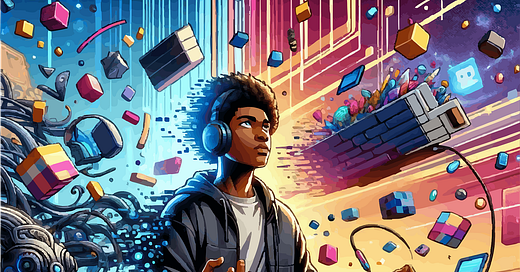Last time I raised the issue of how we best support critical thinking. As part of this discussion, it’s hard to escape the influence of digital technology. After all:
Concerning misinformation and conspiracy theories tend to be spread via social media .
Digital technology often doesn’t lend itself to thinking deeply about what we see and read (e.g. Singer Trakhman et al., 2019).
Spending a lot of time scrolling devices uses time that could have been spent more usefully. Kids aged 11–14 are spending 9 hours per day on screens.
Of course, I’m not going to suggest that all technology is bad. It can be a very useful way of gaining information. For example, many educators (perhaps you included) have informed themselves about cognitive science via social media and online reading. It can also be fun.
However, we do need to be cautious about how technology is used in the classroom. There have been concerns raised about the role of phones, and about the amount of time students spend on digital devices. And when it comes to the classroom, it’s part of our business as educators to think about both how we use technology (or don’t) as part of pedagogy, and about how well our students are prepared to engage with what they experience outside of class.
Podcast
I was recently in the audience for a live podcast recording that addressed some of these issues. In the first section of the podcast below hosted by Cindy Nebel, we hear Jared Cooney Horvath argue that technology has been generally detrimental to learning thus far. Later, he and Cindy discuss the potential and the risks of GenAI.
Learning Scientists podcast episode 86
Thought provoking, I hope! And as was argued by Roediger and Pyc (2012), the unimpressive findings on costly learning technologies such as one device for every child stand in contrast to techniques such as desirable difficulties, which are inexpensive and effective. As they say in their paper: “there is much low-hanging fruit to collect before dreaming of sky-high bonanzas that may turn out to be false”.

Impact on thinking
With all this in mind, what is the effect of things like internet use in how people think critically (or don’t)?
When you combine the statistics about teenagers’ internet use with reading for pleasure being at a record low, it seems that many (perhaps most) of today’s students are missing out on opportunities to focus and think deeply about complex texts. And of course, learning depends on engaging with challenging tasks.
This may be even more of an issue with GenAI. It can be a helpful tool, certainly, but we surely want to avoid it being used as a shortcut for writing – or for thinking.
More generally, there seems to be a need to weigh the uses of technology against the potential impact on the development of knowledge, and on psychological skills/capacities such as focus, reading, and critical thinking.
So, I guess that’s where I am landing on this issue right now. And as Jared says in the interview above, we need to remember that how we as adults use GenAI or any other technology – with the benefits of having already gained an education – is not necessarily a good guide to how students should use it.
Would love to hear your thoughts.
Jonathan
Please note that my slides and similar materials are used under a CC BY-NC 4.0 license. This means you can use or adapt them with attribution for non-commercial purposes. If you wish to use my materials for other purposes, feel free to get in touch.



Thanks for a brilliant post highlighting one of the most pernicious trends in education. Massive investments in ed tech divert money from other more effective educational resources, and endless hours in front of screen are no replacement for deep reading and interactive instruction.